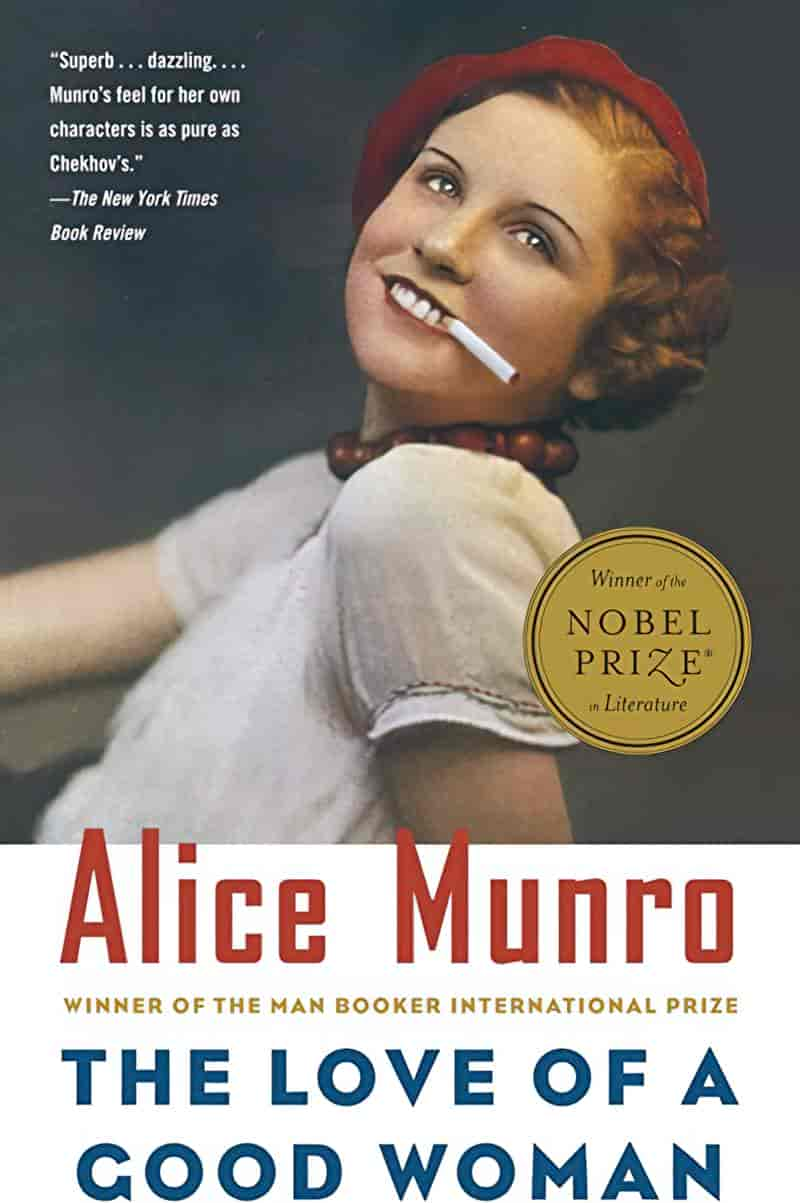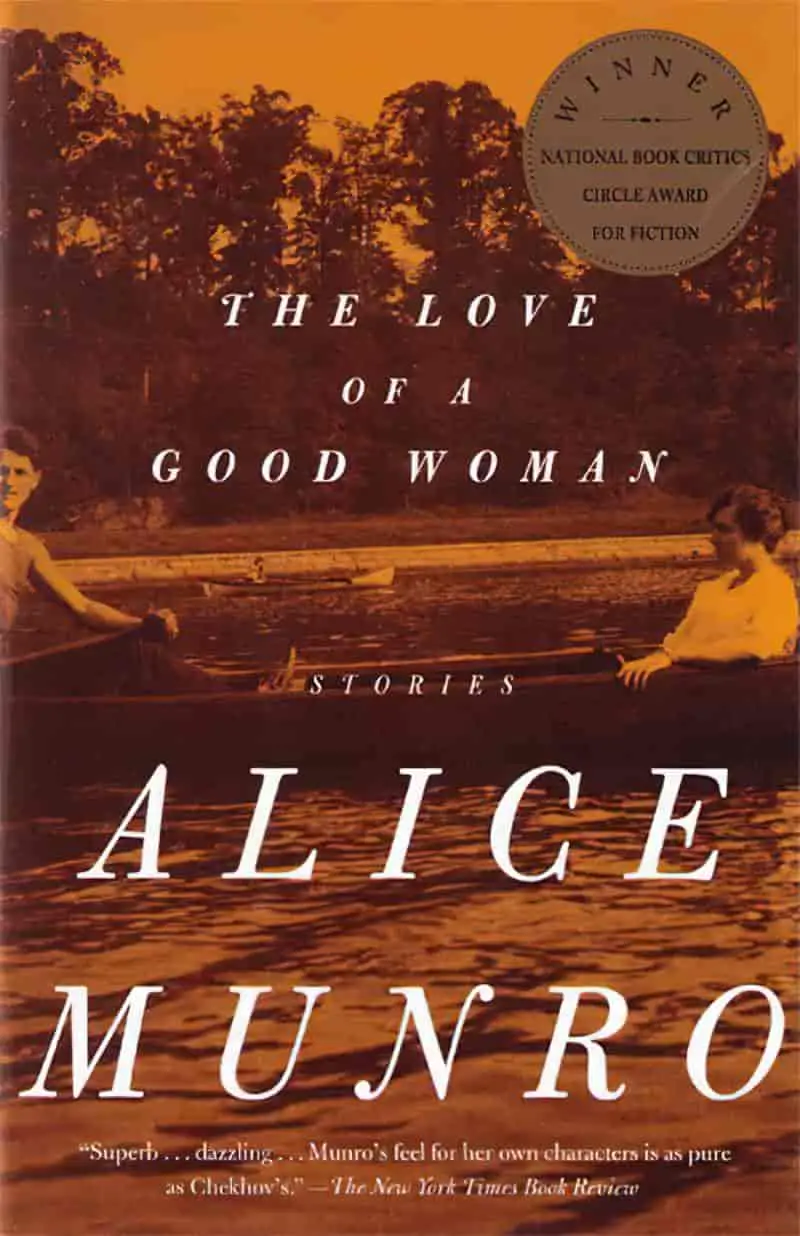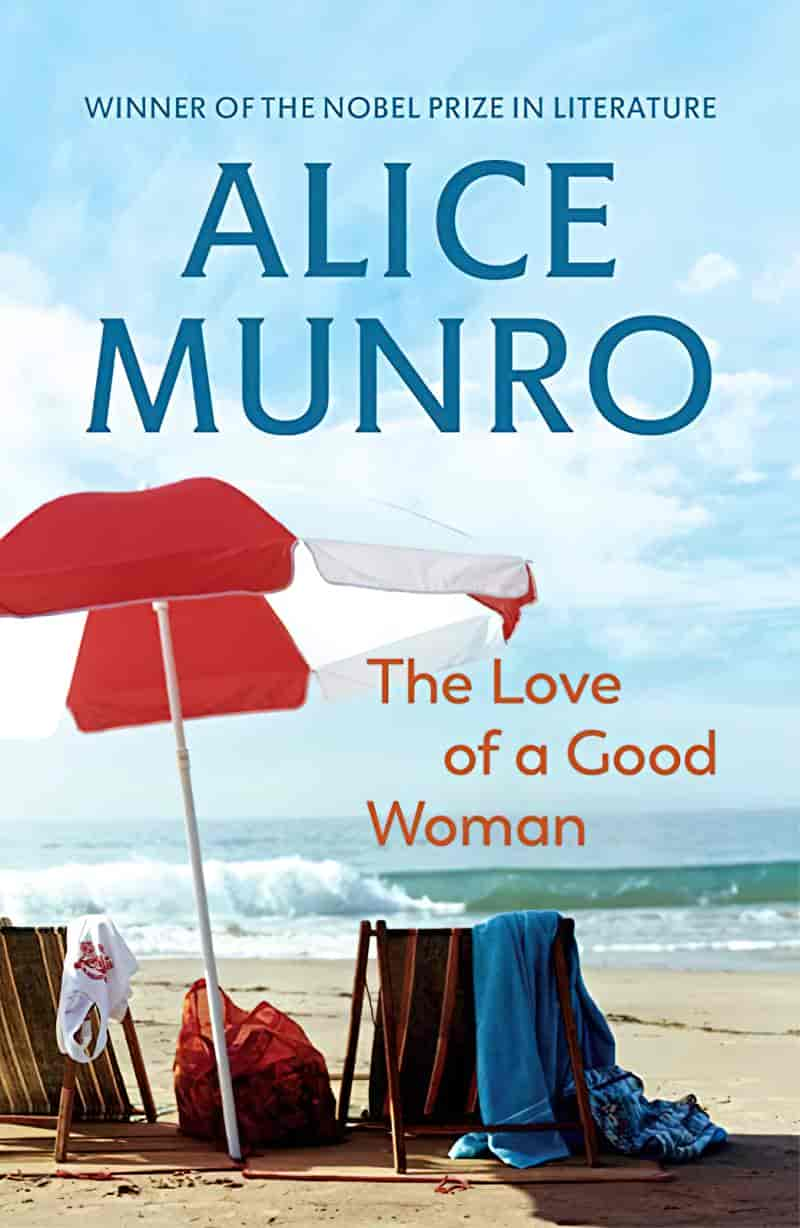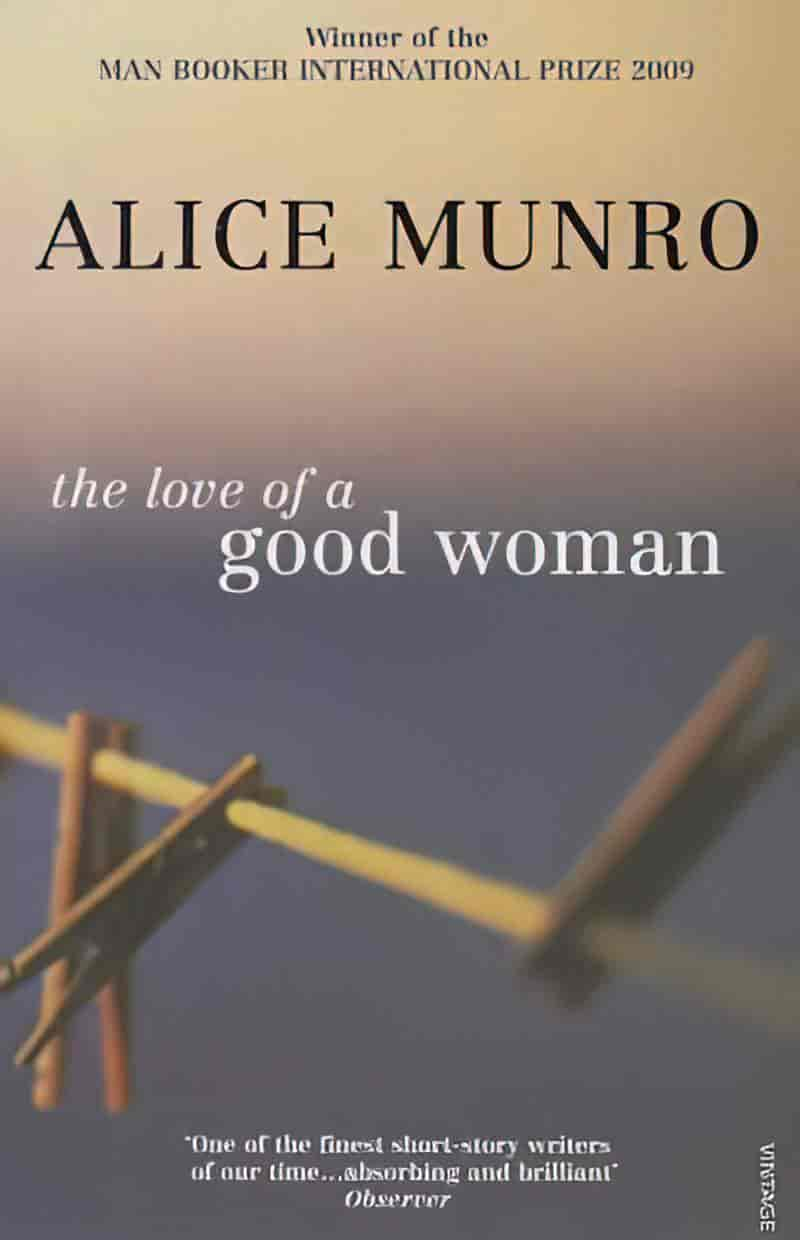**UPDATE LATE 2024**
After Alice Munro died, we learned about the real ‘open secrets’ (not so open to those of us not in the loop) which dominated the author’s life. We must now find a way to live with the reality that Munro’s work reads very differently after knowing certain decisions she made when faced with a moral dilemma.
For more information:
My stepfather sexually abused me when I was a child. My mother, Alice Munro, chose to stay with him from the Toronto Star
Before Alice Munro’s husband sexually abused his stepdaughter, he targeted another 9-year-old girl. ‘It was a textbook case of grooming’ from the Toronto Star
So, now what?
Various authors on CBC talk about what to do with the work of Alice Munro
And here is a brilliant, nuanced article by author Brandon Taylor at his Substack: what i’m doing about alice munro: why i hate art monster discourse
“Before The Change” is a short story by Canadian author Alice Munro. Find it in The Love of a Good Woman collection (1998) and also in the August 24, 1998 edition of The New Yorker.
“BEFORE THE CHANGE” IN A NUTSHELL
It is the end of summer, 1960, and a young woman writes a letter to someone she shortens to ‘R’. She has returned home from the city to her father’s house in rural Canada where he lives with his housekeeper Mrs. Barrie after the death of the narrator’s mother many years ago.
Via the narrator’s description of the house, which utilises Gothic tropes, readers get the sense there’s something strange going on in this house. What is it?
CHARACTERS IN “BEFORE THE CHANGE”
THE FIRST PERSON NARRATOR
The young woman writing these letters shows herself to be a keen observer of her home life — a distance she has acquired after living in the city for a few years. Like all of us, home is never the same once we leave and come back. Our parents become defamiliarized to us and we’re able to see them as the individual humans that they are.
Probably for this reason, the narrator is musing about the character of her father, and describing him to her correspondent.
She also sees her childhood home in a new light, describing the house as it now is — cluttered and dark and dusty with furniture oddly placed.
Her voice is light and cheerful, at odds with the Gothic setting and characters she describes. We just know something is going on here, beneath the surface. What’s going on in this house? What is she not telling us?
One of the first clues: Her stomach has grown flatter now. Was she pregnant? Unanswered immediately by the text: Did her doctor father know about this? If so, what did he think about it in 1960?
Did the narrator have an abortion? Eventually we learn she gave birth, and that she hadn’t told her father. Only after she comes to terms with her father’s ‘special’ patients does she tell him.
THE NARRATOR’S FATHER
The father is a doctor, and his narrator daughter feels he has more tolerance for other people’s ailments than for hers. She can’t expect any sympathy from him.
He is an almost cartoon-like character, with a ‘hard high stomach’ and long legs.
When you ask him to go into subjects that he thinks don’t need to be talked about, or take up an argument that doesn’t need proving, he has a way of lifting his upper lip at one side, showing a pair of big tobacco-stained teeth.
“Before the Change” by Alice Munro
What is that expression? It’s as if he’s got a list of offenses both remembered and anticipated and he’s letting it be known how his patience can be tried by what you know you do wrong but also by what you don’t even suspect. I think a lot of fathers and grandfathers strive for that look — even some who unlike him don’t have any authority outside of their own houses — but he’s the one who’s got it exactly permanently right.
“Before the Change” by Alice Munro
The narrator sees her father through a comedic lens, reminded of things she always knew about him, but with extra observations due to recent absence. She compares her father to some kind of machine or medical apparatus:
As you may recall he is a noisy breather. His breath gets dragged down stony alleys and through creaky gates. Then takes off into a bit of tweeting and gurgling as if there was some inhuman apparatus shut up in his chest. Plastic pipes and colored bubbles. You’re not supposed to take any notice, and I’ll soon be used to it. But it takes up a lot of space in a room.
“Before the Change” by Alice Munro
As the story progresses, we understand this strange way of breathing isn’t just a quirk, but indicative of a serious health condition.
When we are told the narrator’s mother died in childbirth, we can see the reason for this man performing illegal abortions as part of his practice as a family doctor: Childbirth can kill, and childbirth killed his wife. So how bad can abortions be, compared to that?
R
The recipient of the letters. (R for Recipient?) The initial anonymises the character, but also shows familiarity between two correspondents. We are reminded that this letter would be handwritten. Language feels off-the-cuff; the recipient shortened to R to avoid writing the whole thing out. Ditto for Mrs. B. The initial also distances the writer from this person. She doesn’t have to say their name, can almost pretend they’re imaginary. And as the story goes on, we understand she might write a letter to an unnamed person in case the correspondence were ever found. These letters reveal sensitive information.
Other things in this story are left out, too. What are they, readers wonder. What are we not being told? What is the snail under the leaf?
Eventually we are shown that R stands for Robin. We also learn that the narrator is not sending these letters. She’s writing them for her own benefit, processing something.
Unexpectedly (I’m sure on purpose), Alice Munro reveals that Robin is a man’s name (she lampshades our surprise by having the father surprised, too, that Robin can be a man’s name), and that Robin is a beau the narrator brought home. She introduced him to her father, who referred to him as a curly-headed beanpole, meant as a compliment.
He teaches at a theological college which forbids sex before marriage, even when the partners are engaged to be married. A baby before marriage carries a permanent stigma. (Permanency is inherent to stigmatisation — a taboo act occurs and it’s not something a person — or couple — can ever come back from.)
MRS BARRIE (MRS. B)
The maid, or long-term housekeeper. She speaks with a lower-class dialect, which the writer feels self-conscious writing down, ‘though that is how she speaks’.
Mrs Barrie is a character out of a Gothic novel — a small, bony woman who wears her hair in a ‘bizarre black haircut in a Chinese sort of bob around her small withered face’, and a ‘stuffy’ cardigan. Her apron has bleach stains on it. She seems to be in the early stages of dementia. She’s certainly got the trademark suspicion:
Mrs B. actually believes the laundry is cheating her and taking the time to rip off the name tapes and sew them onto inferior articles. So she argues with the deliveryman and says he comes here last on purpose and he probably does.
“Before the Change” by Alice Munro
Mrs Barrie is a Mrs Danvers character (cf. Rebecca by Daphne du Maurier), who insists no one in her family ever goes grey, and that her jet black hair is natural. Yet the narrator has seen for herself the purple droplets of hair dye running down her face, staining the sink. Still Mrs Barrie refuses to admit to the ruse. In Victorian Gothic fiction, Mrs Barrie is the Madwoman or the Old Wife. The Old Wife was the woman in your community who dished out advice and help to do with childbirth, herbal remedies and so on. She lost a lot of respect, as well as her place in her community, with the emergence of modern day science. (Shakespeare poked fun at this character. You can see him doing that in Macbeth, The Winter’s Tale and The Tempest.)3
The housekeeper is thereby revealed as a silly, unreliable duplicitous character, though perhaps not in any significant way which would impact anyone else. After all, how much do we really owe others about the details of our own personal upkeep?
More than that, Mrs B. is a socially liminal character, and her insistence on dying her hair an unnaturally dark black may be her attempt to belong to some strange, unnamed social realm rather than this one, or her attempt to remain frozen in time, avoiding ageing, avoiding death. Death is the thing Mrs. B must keep from confronting in her day-to-day life.
Unsympathetic though she is, when Mrs Barrie is injured, unable to work, the narrator steps into her role. She becomes Mrs Barrie. She even starts drinking the cheap coffee and doesn’t mind it, which means her transformation is complete. Her natal house has reclaimed her.
SETTING
Kennedy is running against Nixon, which sets the story in 1960. The narrator’s father has no opinion on these Americans when asked. He is not at all concerned with anything that happens outside his own realm.
ANACHRONICITY
Alice Munro constantly drops information to suggest the narrator’s home, with her doctor father, is a microcosm from another time. In Gothic novels, too, inhabited by ghosts, those old country mansions are separate from chronological time, existing instead in a separate mythic realm, where time has no meaning.
Why would Alice Munro want to borrow that particular Gothic trope? Probably because abortion and pregnancy are as old as humanity itself, much like sex work, relegated to this other underworld which nevertheless exists in the real world.
What’s Gothic about this story?
- The rural suburban house which harbours secrets
- The upper-class household (1960s gentry)
- Its position on the edge of civilisation
- The characters of the (fallen) aristocratic father, the long-dead mother, the household servant who has secrets of her own and may or may not be a disruption to homely safety.
- We might also describe Gothic as ‘ruined opulence‘, which might describe the opulently dressed young women who, without abortion services, would be in danger of personal ruin.
- The Gothic releases forces which are usually repressed. In the Gothic, anarchy is loosed and contained at the same time. In Gothic, we have the return of whatever’s been repressed. Here we have a daughter returning to her natal home and understanding something which has always been (and which will remain) taboo.
- The Gothic is about our fear of the past returning, which in turn is about our thoughts around humanity’s hereditary animal nature. We sit uncomfortably with the fact that we are so closely related to other animals.
- Gothic stories do not divide, but rather integrate the Self and the unknown Other. With new realisation that her own father performs abortions, the narrator is revising her entire childhood and what she always assumed to be true about her household: That her father is a fine, upstanding member of society, accepted in all polite society. What else doesn’t she know? Her own father is now Other, and he threatens to destabilise her sense of self.
THE GOTHIC AND SECRET WOMEN’S BUSINESS
Gothic tropes are a good choice for a story dealing in the secret, taboo aspects of childbirth. The Gothic and female biology are very much intertwined.
When the Gothic was emerging as an important genre in its own right, medical science was just starting to replace the mystery of the female body with scientific facts. Hysteria was the dominant response to sexual confusion and abuse. Encoded in law, marriage meant a loss of power and autonomous identity for women. Pregnancy and childbirth were downright dangerous, messy and awful. Today things are a bit different: We understand (basically) how the body works. We know that hysteria is an unhelpful, outdated word for what is actually a collection of disparate conditions. Many women are brought up to believe we can have it all (itself a kind of fairy tale). But we still live in a patriarchal world. Classic Gothic ideas remain recognisable to modern (1990s) readers.
ABORTION IN 1960s CANADA
In 1960 women had very little say in their own reproductive health.
Formally banned in 1869, abortion would remain illegal in Canadian law for the next 100 years. In 1969, the Criminal Law Amendment Act, 1968–69 legalized therapeutic abortions, as long as a committee of doctors certified that continuing the pregnancy would likely endanger the woman’s life or health.
Wikipedia, Abortion in Canada
ABORTION CLINIC AS THE ULTIMATE HETEROTOPIA
I’m sure Michel Foucault would call the abortion clinic a heterotopia (when he came up with the word in 1967). In fact, the abortion clinic is the perfect example of heterotopia, because Foucault tracked the rise of the medical clinic to the rise of the heterotopia, and the abortion clinic is the ultimate medical clinic:
- The heterotopia is both real and unreal. Foucault gave the example of a mirror as the perfect example of this. (The image reflected exists; the reflection itself does not.)
- A heterotopia has a specific operation anchored to a specific time. An abortion clinic in an old country house would only ever exist in a community which has decided to turn a blind eye to a necessary crime, which no doubt benefits the men who uphold and make the laws. (It is a well-known fact that the men most opposed to abortion will still very frequently let their own wives, and especially their mistresses, have them.) Foucault gave the example of cemeteries. We might suppose cemeteries have been around forever, but even cemeteries differ from era to era. Before the 18th century, cemeteries were next to churches. Only important individuals were allowed to be buried there. Lower classes were taken to charnel houses. In the 1960s, abortion clinics worked in the same way. Only wealthy women attended them. Poor women were forced to endure far more risky procedures, or attempt abortions themselves. It makes sense that the abortion clinic exists at the outskirts of town. People don’t want to see them. More generally, medicine has allowed us to pretend that death does not exist. We tell ourselves that medicine can cure anything, and are almost shocked to learn that it can’t.
- Heterotopies have incompatible elements in a single state. Foucault uses the example of a garden, with a number of different vegetations. Gardeners try to impose some order. At this point I’m almost positive Alice Munro has been reading Foucault, because she talks about Mrs Barrie’s nephew who comes to mow the lawn, and describes the battle between different foliage which the narrator recalls over the years.
- These elements function in temporal discontinuity. Meaning: There’s a break in normal time flow. Alice Munro used the planetarium to break the normal time flow in her 1978 short story “Moons of Jupiter“. That story is much more difficult to track if readers are interested in keeping track of chronology but here, too, we have a narrator who wefts and weaves childhood memory into the present narrative of a trip home. Munro also messes with time by creating a Victorian Gothic household and a father who seems stuck in the past, despite, we assume, making use of the latest medical technology available to him to carry out his task. Foucault also said that heterotopies are frozen in time, protected from its ravages.
- Heterotopies are demarcated but acceptable. They are linked to the opening and closing of doors. Abortion clinics are demarcated but acceptable (in their own way). So long as the door is closed, most people can live with the reality that some pregnant women will always be seeking abortions.
- Heterotopies operate in relation to all of those spaces, creating some kind of illusion. Like the brothel, an abortion clinic is separate from the domestic space, and allow for the fantasy that pregnancy never happened in the first place. Life will (hopefully) return to normal very soon after a woman leaves. Like jails and brothels, abortion clinics exist to counter our real but messy world. Heterotopies tend toward two extremes: Rare chaos or rare order. The father’s house is the untidy, paper-scattered house of an academic, and the housekeeper can’t make up her mind what to throw out, suggested a hoarded up old house. Yet in order to perform them safely, the abortions themselves must follow a rigid set of protocols. We can deduce that this happens, because the father has a set way of doing things. He won’t even drink perked coffee, favouring instant because ‘it always tastes the same’. This small detail does so much: Shows a man set in his ways, cemented in time, yet a solid man of reliability.
“BEFORE THE CHANGE” BY ALICE MUNRO ANALYSIS
Many of Alice Munro’s stories feature characters who half-know something. Over the course of the story, their understanding progresses somewhat (sometimes a little, sometimes a lot).
“There’s a difference between knowing and yapping.”
The abortionist
The narrator’s tone changes markedly after the opening of the story, in which she writes breezily about her Mini, and the eccentricity of her father. This tonal shift happens somewhere around the first third of the story. She’s clearly had an epiphany and is keeping her new knowledge off the page, unable to write it down yet, even in a letter she never means to send.
Alice Munro has made sure we know what year it is. Via the narrator’s wondering, “How could I not have known? Is it because I was sent elsewhere to attend school?” etc. the reader also wonders what the secret of this household is.
We know it’s medical. We know it involves sophisticated, nicely-dressed women, who have come for their ‘vitamin shots’. Readers will likely guess before we have it confirmed: The narrator’s father performs abortions.
At a symbolic level, too, Alice Munro offers hints. There’s a motif of roundness running through the story:
- the ‘(colored) bubble’ in the narrator’s description of her father
- the narrator as a child eating spotted, yellow pears as she attends her own private church service (pears are especially reminiscent of pregnant bellies, women and fertility, an association utilised by many a literary writer including by Katherine Mansfield in “Bliss“)
- The changing of the seasons, suggesting circularity of time
- The diamond ring, thrown away under (the wheels) of a parked car
- the father talking about the Greeks and how they could have been world leaders in mathematics, only they had no concept of zero. (The figure zero of course being round.)
Because of the taboo around women’s bodies in general, the narrator never figured out her father performed such things. It’s only because she’s since experienced childbirth herself, in Ottawa, that she now understands (only after returning home and seeing her childhood home afresh) that her father, too, performs a medical procedure to do with gynaecology.
In the mid 20th century, adoption was completely closed, and the narrator asked not to see the baby she birthed. She will never know anything about the baby she grew inside her, including its sex, because the baby was immediately taken away. Now we see the daughter is similar to her father, who refuses to use the word ‘abortion’, even though that’s what he does. Father and daughter both keep something of the reality of their lives cordoned off, in order to deal with it. We all do.
FOUCAULT’S HETEROTOPIA ILLUMINATED POWER STRUCTURES
When the narrator’s father hands her $5000, she feels no gratitude. On the page, she feels her father understands she now knows what’s happening in the house, and that he is buying her silence and complicity. She may also feel this is dirty money, understanding that only wealthy women can afford safer abortions with qualified people such as her father (which explains why the women who come to the house are unusually well-dressed — she is observing a wealthier class of people). Of course, later in the story, the $5000 feels like not much at all. Culture has gone through a shift, and so do we, as readers.
Back to power and Foucault’s heterotopia. Constructed spaces have their own power. Spaces are constructed to be powerful. Perhaps the biggest contribution Foucault left as his legacy: He asked us all to think about the dynamics of power. It’s always worth taking a close look at spaces, how they are used, and who is allowed entry.
Heterotopias exist to wall off all the things that don’t belong in a utopia. But who decides what utopia looks like, anyway? The designation of heterotopia is contingent on a shared ideal space. The ideal space of 1960 was one in which women have many babies, without complication. These babies are always wanted, and pregnancy itself is never dangerous. Of course, this illusion can only ever be maintained by those who have nothing to do with pregnancy and childbirth, which has always been a confronting, harrowing affair.
I believe Alice Munro is saying something profound about power, and how heterotopias are maintained by those in power, forever affecting a generation of women (especially), though men are also implicated by dint of being human. (The character of Robin was also, inevitably, affected. The narrator’s father, too, had his entire life affected by the reality that women get pregnant, sometimes without wanting to be, and that they sometimes die.)
Munro has illuminated feminist implications of the heterotopia. There remains plenty of space to develop the idea of Foucault’s heterotopia in the fields of, say, colonial studies, queer studies and disability studies.
WHAT IS ‘THE CHANGE’ OF THE TITLE?
The ‘change’ of the title refers to shifting cultural attitudes. What could once ruin your life no longer does. Massive cultural shifts happened in a single lifetime, which has a perturbing effect on those who lived through it. An older woman can look back at her younger self and imagine a parallel life, one in which the exact same events happened, but because attitudes are different now, consequences would lead to a completely different life.
Michel Foucault’s concept of the mirror comes to the fore again here: Recall Foucault’s ultimate heterotopia of the mirror: The reflected object (real) and the reflection (unreal).
The narrator’s other, imagined life, in which she married her lover and had his baby without censure, can only ever remain unreal(ised), cemented forever in that other walled-off garden of the imagination.
But the narrator wisely acknowledges that the culture seems to require that something is kept taboo. Once abortion becomes decriminalised, and pregnant women ‘garlanded’ even without being married, there always remains in human society something which walls people off.
This is what makes the story timeless, in line with the concept of the heterotopia, both timeless and grounded in time. What is it that the culture considers taboo in the early 2020s? I put it to you that gender is undergoing a shake-up. We are moving away from a simple binary concept of gender, which necessitates disposing of gendered roles, which those in power find very convenient. Trans and non-binary individuals bear its brunt, though everyone is affected by gender expectations whether they feel this keenly or not.
THE KICKER AT THE END
Alice Munro doesn’t write cheap twists, or even clever twists a la Roald Dahl. But she’s good at a kicker of an ending. It is revealed that the father is a pauper, living in genteel poverty. The reader will understand before the narrator does that the housekeeper has been embezzling his funds, or more likely, the nephew has. (Notice how Munro mentioned his presence, but only ever on the periphery. There was a storytelling reason for that.) That’s my take, anyhow. But as the narrator says, there could be any number of reasons why her father has no money to his name.
What it does reveal: That father and daughter once again share in common their attitude towards wealth. It’s likely the father was performing his specials out of charity, or else much of his GP work, attending to sick people who couldn’t otherwise afford him. Perhaps he was performing the abortion service for (mainly) wealthy women so that he could service the various health needs of his own community for free.
Also against expectation, the narrator makes no attempt to get her $4000 back off the housekeeper. She suddenly feels free, and is also able to say a proper goodbye to her former fiancee, the (non-) recipient of these letters.
FOR FURTHER INVESTIGATION
The future that we now inhabit will not resemble the past before Roe, when women sought out illegal abortions and not infrequently found death. The principal danger now lies elsewhere, and arguably reaches further. We have entered an era not of unsafe abortion but of widespread state surveillance and criminalization—of pregnant women, certainly, but also of doctors and pharmacists and clinic staffers and volunteers and friends and family members, of anyone who comes into meaningful contact with a pregnancy that does not end in a healthy birth. Those who argue that this decision won’t actually change things much—an instinct you’ll find on both sides of the political divide—are blind to the ways in which state-level anti-abortion crusades have already turned pregnancy into punishment, and the ways in which the situation is poised to become much worse.
We’re Not Going Back to the Time Before Roe. We’re Going Somewhere Worse
We are entering an era not just of unsafe abortions but of the widespread criminalization of pregnancy.
By Jia Tolentino
June 24, 2022
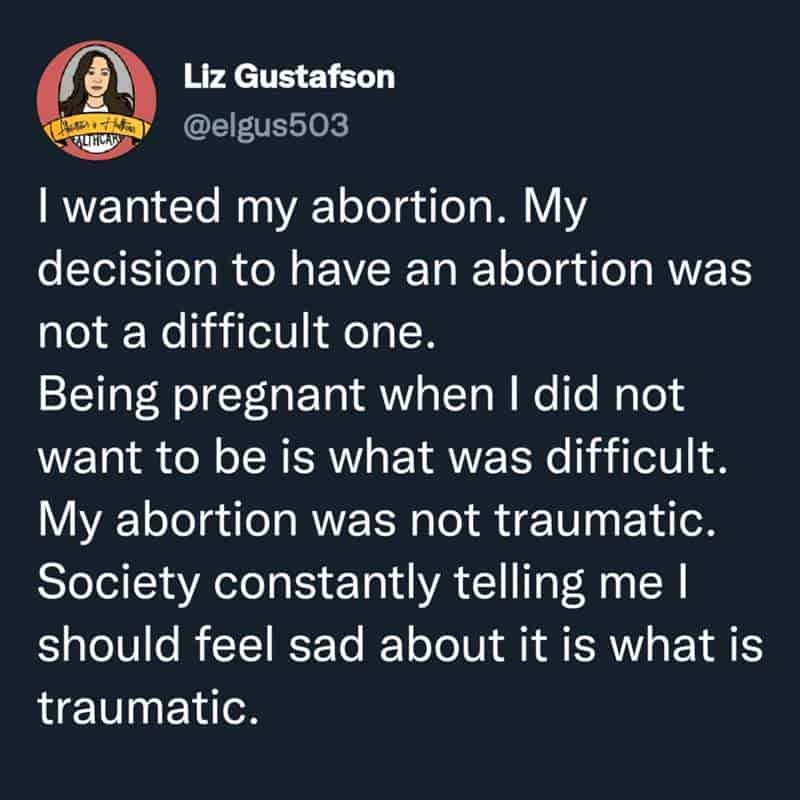
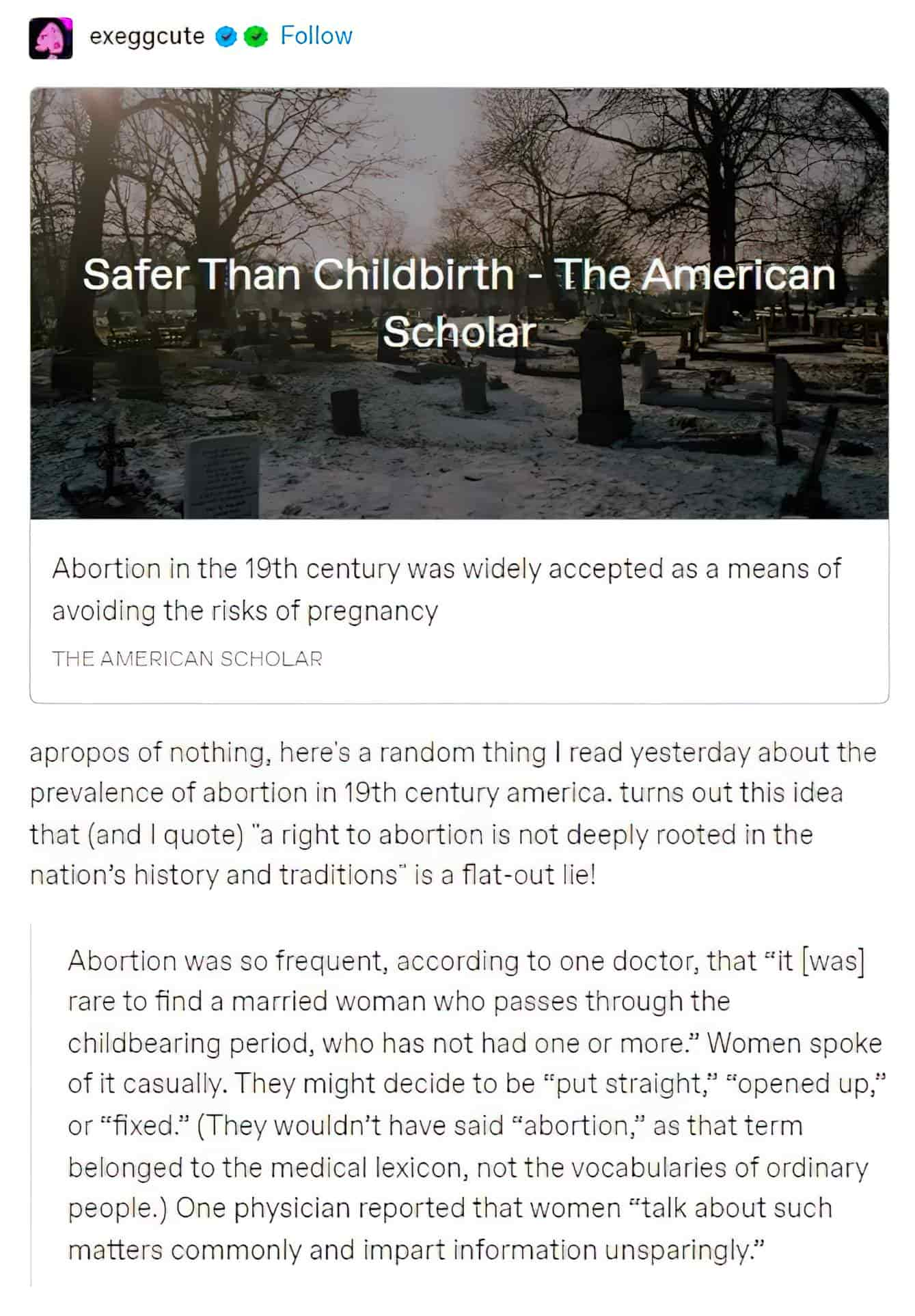
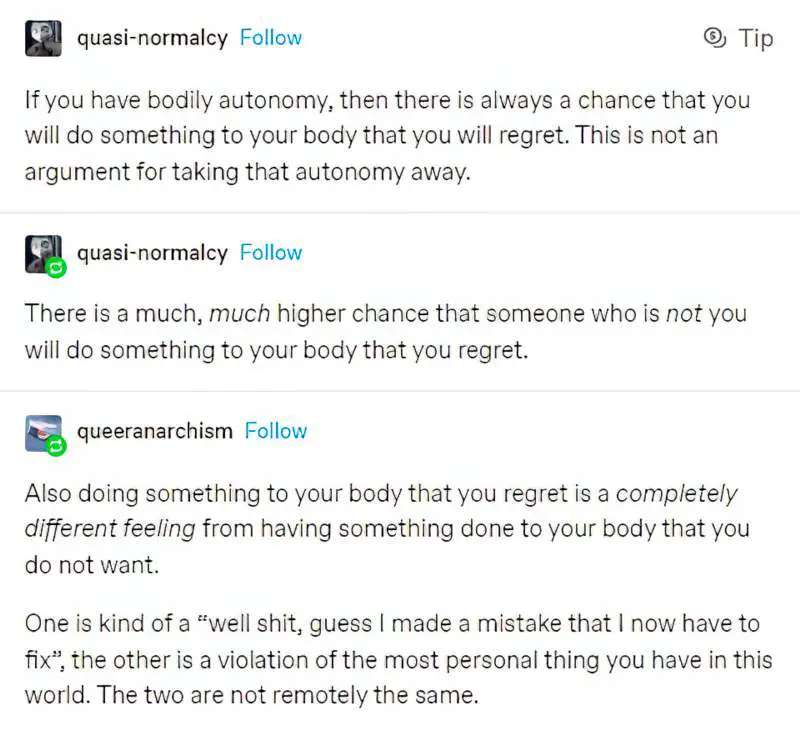
THE LOVE OF A GOOD WOMAN (1998)
- “The Love Of A Good Woman” — a story revolving around a crime but not a crime story. Reminiscent of Stand By Me. Also in the December 23, 1996 edition of The New Yorker.
- “Jakarta” — not actually set in Jakarta. A story of an old woman whose husband went missing, and also about the so-called ‘free love’ of the 1960s, which afforded far more freedom to men.
- “Cortes Island” — a symbolic island standing in for the psychology of newly wed isolation. Also in the October 12, 1998 edition of The New Yorker.
- “Save The Reaper” — a re-visioning of Flannery O’Connor’s “A Good Man Is Hard To Find”. Also in the June 22, 1998 edition of The New Yorker.
- “The Children Stay” — What did divorce look and feel like when divorce was brand new? Also in the December 22, 1997 edition of The New Yorker.
- “Rich As Stink” — Focuses on an adolescent girl. Some commentators call her ‘precocious’ but I think she is a typical 11-year-old.
- “Before the Change” also in the August 24, 1998 edition of The New Yorker
- “My Mother’s Dream” — Critics don’t love this one, but I do. I read this short story as a commentary on how it takes a village to raise a child, and when any given mother doesn’t measure up as parent, other women can step in. Together, caregivers can band together to create a ‘whole’, and bring up a perfectly rounded and cared-for child, but alone? No. And we shouldn’t expect mothers to be perfect.
